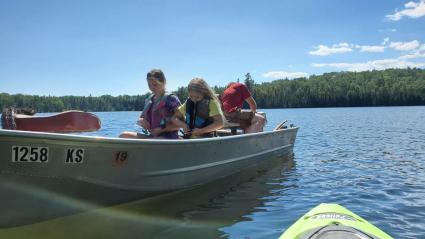Local and regional DNR shares boating safety reminders
The Minnesota Department of Natural Resources has seen a deadly start to the open-water season in Minnesota.
According to the DNR, as of June 16, as many as nine people have been victims of boating fatalities. That number, which is preliminary, marks the most fatalities at this point of the year in more than a decade.
In addition, a higher-than-average number of people have drowned at places like beaches and swimming pools.
Officials with the Minnesota Department of Natural Resources are reminding everyone who’s around the water to make safety their first priority.
The beginning of the summer season is traditionally a busy time of year on the water. This year has been even busier than usual – particularly in recent days as people sought respite from an abnormally long string of above-average temperatures. Unfortunately, the increase in activity also has resulted in unusually high numbers of people who didn’t make it off the water.
“There are too many families who won’t be seeing their loved ones again,” said Lt. Adam Block, boating law administrator for the DNR Enforcement Division. “It’s up to everyone who heads for the water to double-down on safety and prevent what should be a fun experience from turning tragic.”
The people who’ve drowned so far this season span the age, gender, and swimming ability spectrum. DNR safety officials offer the following tips for staying safe around the water.
- Wear a life jacket. All children, and adults should wear a life jacket anytime they’re around the water. Each year even adults who are good swimmers go under the water and never resurface.
- Avoid alcohol. Its effects are magnified on the water and the consequences can be deadly. About 40 percent of boating fatalities include alcohol.
- Designate a “water watcher.” This person puts down their cell phone or other distractions and focuses only on watching the water to ensure everyone is safe.
- Wade feet-first into the water to avoid jumping into an area where the current, depth and other conditions are unknown.
- Constantly supervise children while they’re in or near the water. Looking away even for a moment is enough time for tragedy to strike. Drowning often doesn’t involve yelling, screaming and waving of the arms. Rather, it often occurs silently.
- Swim only in designated swimming areas.
WTIP’s Rhonda Silence spoke with local Department of Natural Resources Conservation Officer Mary Manning for more details on boat and water safety.














